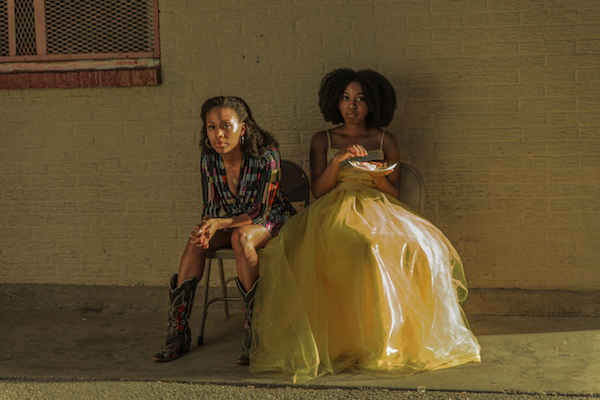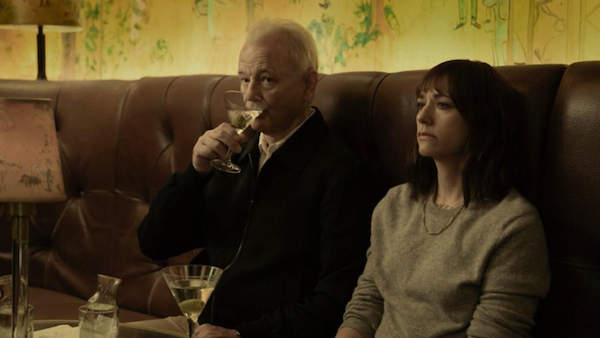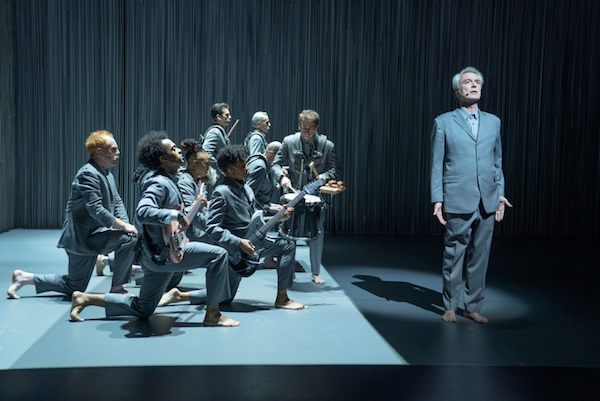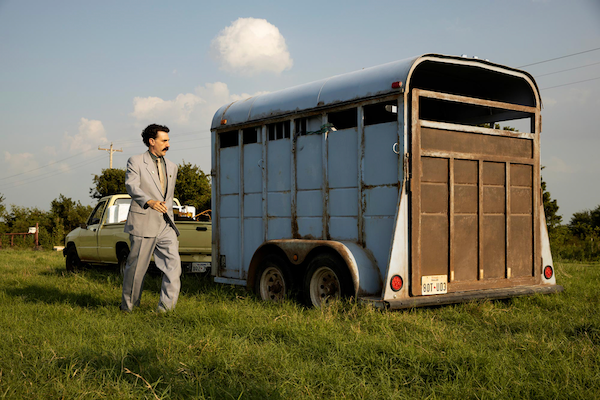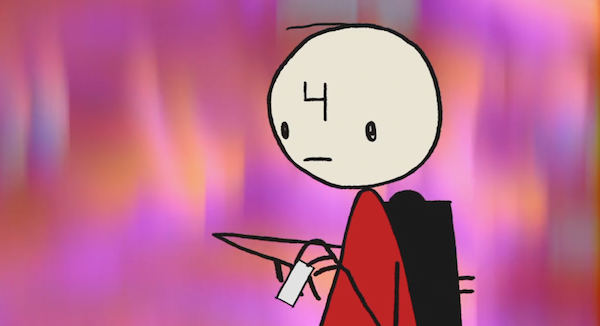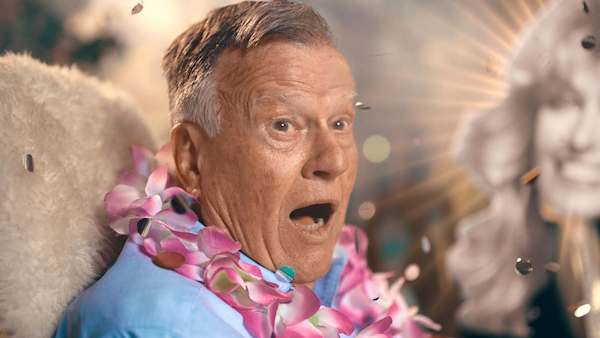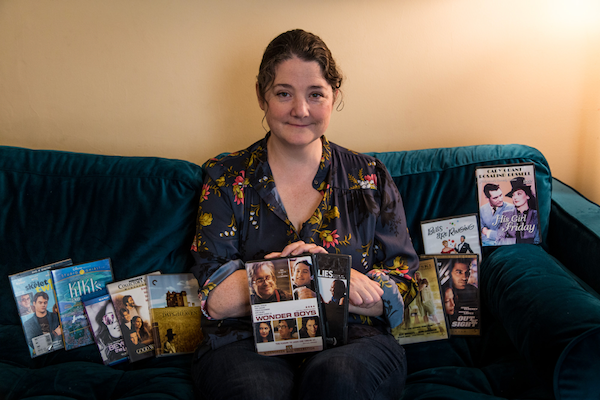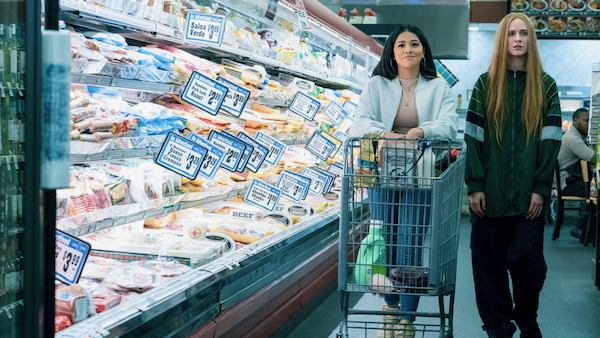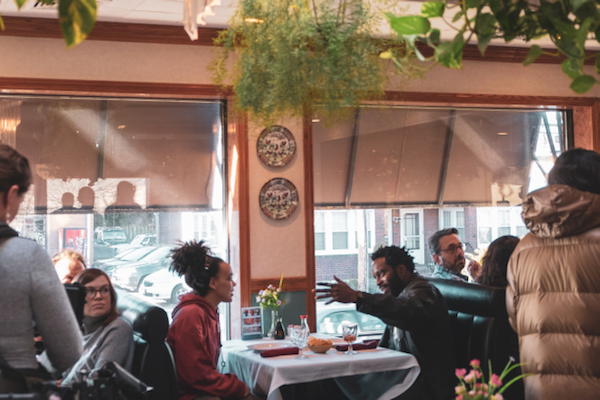
Interview by Greg Carlson
Rachel Harrison Gordon’s “Broken Bird” may be only ten minutes long, but it is a powerful debut and one of the best films of 2020. An autobiographical story about a biracial girl in New Jersey preparing for her bat mitzvah, the film premiered at the Berlin Film Festival and was included as part of the South by Southwest Film Festival’s collaboration with Amazon when the in-person version of the event was canceled as a result of the pandemic.
Greg Carlson: Are you in Philadelphia?
Rachel Harrison Gordon: Yeah, I’ve been here since March. My partner and I were in Brooklyn. But now everything is remote, so we can be anywhere.
GC: What is the status of your program at NYU?
RHG: I’m in my final thesis year, which would, COVID or not, always feel a little at a distance, doing our own thing. But I’m hoping eventually to be able to go back into production and film something. I’m writing a lot instead.
GC: As soon as I saw “Broken Bird,” my first thought was, “Please tell me this is going to be developed into a feature film.”
RHG: It is still surreal to me that people can access the film and watch it and like it — that’s even better. But, yes, absolutely. The idea was originally a feature. I adapted it as a short to complete a school assignment. In the feature version, I’m looking forward to the different people we will get to meet and looking at the different eras. There’s a lot more in there. I’m finishing another draft this week. Almost there!
GC: You made your way over to movies from engineering and data analytics. Not a traditional arts background. What happened?
RHG: I am still asking myself the “what happened?” question. There were many factors. One was that my mom’s own upbringing — she was the oldest kid in her family and was kind of responsible for raising her siblings — led her to focus on stability. She never explicitly spoke to me about my career path, but certain values were upheld. And her being a single mom solidified the idea of pursuing something that would allow me to rely on myself.
GC: Did she encourage you to make or appreciate art?
RHG: She knew so much about art. She taught me the names of painters, and artists, and sculptors. We would go to shows and installations all the time. But I always thought that art was someone else’s profession. We could absorb and appreciate but it was never something I thought about doing.
GC: You obviously circled around at some point.
RHG: Through my other careers, especially data analysis, I was always in a position where I was really studying people. Even in engineering, it was about how people interacted with objects and products and how that experience could be optimized. The more I moved away from the equations and into studying things like ergonomics and behavior, I started to gravitate to the stories of people.
GC: How is it possible that “Broken Bird” is your first movie?
RHG: When people ask me to send my other work, I have to awkwardly reply that there is not really anything else I can show! The success of “Broken Bird” depended on working with a team that believed in the story. I had many negative experiences on other sets, so I wanted to learn from that and not repeat it when I got to make my own movie. The environment was like a loving family dedicated to making “Broken Bird” happen.
GC: Never underestimate good collaborators.
RHG: When I would describe the story, because it is autobiographical, people could sense that I was being vulnerable with them. I was determined to execute this in a way that was fair to life itself but also relatable. A lot of the cast and crew had similar experiences, and they said, “We just have to make this work for Rachel.” They were definitely ride or die. The cinematographer called himself my samurai. “We’re just gonna get out there and do this.” I am grateful that they trusted me.
GC: Great movies come from all kinds of places.
RHG: School really helped because the project went from my true story to something that was compelling to other people. Making sure the character had something that she wanted. Conflict in getting it. And some kind of decision regarding what she was going to do about it. I was speaking to an undergrad class and the teacher was communicating about three-act structure and inciting incident — and when I started I did not really know what any of that was.
“Broken Bird” was not designed to necessarily follow that traditional pattern. And that didn’t surprise me because I was not experienced that way. I went with a more poetic, memory-based presentation of the story. A lot of what I was pulling from were memories and feelings of “I never really got to hang out with my dad but I do hold slivers of memory that are critical to how I feel about him.”
So I was thinking about this story my whole life, but in a short period had to get it down on paper. I had it critiqued and criticized backwards and forwards by people who did not know who I was or what I was trying to do. That was a shock to the system. But a separate group of people who did not have my background validated my experience. “This should be onscreen. I’ve never seen this before. Here’s a shot that doesn’t make sense.” It helped me to feel that my intuition was right. It was a learning experience and I am excited to do it again.
GC: One of my favorite moments in the film is in the diner when they order sodas.
RHG: That whole sequence at the restaurant had a lot more on paper that I wanted to do and it got rearranged. I am proud of that scene because it was the first day for those actors together and their relationship is supposed to be distanced and fractured. As we worked, they warmed up to each other and I could see between the takes that the dynamic was shifting. As a director I want to be someone who fuses what is happening behind the camera with what happens in front of the camera.
That sequence is full of these little hints that Andre has a substance abuse issue and I remember fearing that it could be totally lost. And I had to remember that it would be OK. It doesn’t have to be the exact biography of my life. The relationship can be at a distance for all sorts of reasons. It felt like pages were missing when I shot and that made my heart feel a certain way. And I also edited out a lot. But I was happy for the fluctuation of emotions that happen in a short amount of time.
GC: The final scene is also amazing.
RHG: We went to my temple — my real temple — and that was always going to be fraught with some anxiety. We got there 45 minutes late. We called to give a heads up. When we arrived there was hostility about what we were doing and whether we should be allowed to film at all. That was on the first day. I thought, “Why have I gathered all these people here? What have I done?” The tears were welling in my eyes but we made it happen. We shot something that wasn’t explicitly in the script but still captures the tone I was looking for.
I did not want to end on a heavy note. I wanted Birdie to be free and resilient and able to go into this new chapter of her life feeling more at peace with herself. For me it was really powerful because I had never seen images of a black woman holding a Torah other than at my own bat mitzvah. We only had about half an hour to be in that space. We had to be in and out. They would not play music, so I said, “I’ll just clap and sing,” even though I did not like doing that at all!
GC: How many shooting days did you have?
RHG: Five. I think it was enough for what the script called for. A lot of the shape came in the editing room when I was confronted by this idea of realizing how I was protective of my parents. I was dealing with this idea that their characters both needed equal screen time or equal exploration of backgrounds, and I just stripped all of that away. You get enough from each of the parents to understand their influence and you can understand that love exists there. It was a “trust the audience” lesson.
GC: How did you find your incredible trio?
RHG: I was worried about casting. We auditioned a number of people for all three roles. I saw the fewest for the mom, Eileen. It turned out that Mel House is married to a black man and they have a biracial kid. For Indigo Hubbard-Salk, who played Birdie, that was just luck. Spike Lee is one of the professors at school, and he read the script. I had a meeting with him and he was intimidating, just silent and looking at me. He asked me questions about my own background and upbringing.
When I finished, there was a long pause and he said, “Have you seen my TV show?” We watched some “She’s Gotta Have It” scenes with Indigo performing. I didn’t know the family dynamics at play but I could definitely sense tension with one character and allegiance to someone she wasn’t necessarily supposed to have. Her performance was so palpable. I could sense pain, joy, confidence, and a feeling that her character would make herself smaller, which was definitely my experience and the experience of black women I know. I was really struck by her. I’m from New Jersey, so when I meet kids from New York, they’re on another level of maturity. It felt like speaking to an adult. I thought, “Please think I’m cool!”
GC: And Chad Coleman is a force.
RHG: I never imagined that someone like Chad would be in this film. I am the biggest fan of “The Wire.” Abigail Bess, another of my professors, had worked with him on a few stage productions. She said, “Do you know Chad Coleman?” “Of course I know him!” I had asked her for some casting help and she pulled out this binder. “All these people look great, let’s call them up!” She said, “What about Chad?” He wasn’t even in that binder. I thought, that would be a dream, that would be cool, but I better continue looking because that is likely not going to happen.
But I got his phone number and I called him. I was super nervous. As soon as he picked up, the tone and aura he projected made everything melt away. It was like talking to my dad. It still feels like talking to a family member. Chad has his own connections to the character and the story that were so relevant we rewrote some parts of the script. We shot a couple of variations for the ending because he planted some ideas in my head I thought we should at least try.
GC: “Broken Bird” premiered in Berlin. Did you get to go?
RHG: We did! It was really the only in-person festival we got to attend before things shut down. I am not sure why we applied to Berlin. My school recommended submitting to festivals and I was just starting to learn about the role of the festival for the filmmaker. I liked the personality of Berlin.
GC: Did you watch a lot of movies as a kid?
RHG: Definitely. I spent a lot of my time alone. Period. I’m an only child and I was in my room watching movies. A lot of them were older and I was not the intended audience for the films. I watched drug movies because I was trying to understand what my dad was experiencing. I watched “Christiane F.” and “Requiem for a Dream” and “The Panic in Needle Park.” Those are all different, but I wanted to understand why people do the things they do.
GC: Did any family members know you were watching these movies?
RHG: No.
GC: When you saw movies about addiction, did you get more scared or did you take comfort in them?
RHG: I never felt like it would happen to me. I got to college and wondered whether I had an addictive personality. I wondered, “Am I pushing limits more than I should be?” On Jewish holidays you drink lots of alcohol but my mom was hesitant to even let me have a sip of wine. That made me so mad and resentful. My dad was portrayed as a monster and those movies humanized him and gave me a sense of relief that he was not intentionally sabotaging his own life. So I did find these movies comforting, even when the stories showed devastating consequences.
GC: Did you collect movies?
RHG: Lots of DVDs. I still like buying DVDs. I like the inserts and the audio commentaries. I could not be finished with a movie unless I watched the film, the commentary, all the behind-the-scenes stuff, and the bonus features. There was an element of self-education in filmmaking for sure. That stuff is missing from most on-demand.
GC: What is in the collection?
RHG: Some of it is embarrassing! Not having men in my life and being a boy-deprived person, I went to the video store and rented “Dude, Where’s My Car?” fourteen times because I had an obsession with Ashton Kutcher. I don’t even know what to call that genre. I am not sure I like the term stoner movie. It sounds pejorative.
GC: Not to Cheech and Chong. Are you saying that some of your movie selections were based on crushes you had on movie stars?
RHG: Yes, but I didn’t own as many of those. I made my mom drop me off at the video store and rented the same thing again and again. When I hung out with my dad, we went to the mall and bought CDs and DVDs. He wasn’t a gatekeeper. He would watch me open up a title and say, “What would your mom think about this?” So I added some interesting things to my library.
GC: Was there a title that inspired you about the process of filmmaking?
RHG: “Donnie Darko.” I had the version with the director’s cut and I watched both versions to scrutinize the differences. The Flash website for the movie was a cool portal that showed another way to tell a story. I liked hearing the director talk about the locations and shots and actors. It made filmmaking seem less intimidating. I watched a lot of coming of age films.
GC: My favorite genre.
RHG: Mine too! Seeing a school on film and then thinking, “I go to school! This could be doable.” Also, with films like “Donnie Darko,” I loved feeling like an insider, part of a cult when there were so many people that didn’t like it or didn’t get it.
GC: Where is your movie collection now?
RHG: I don’t have much physical media with me currently. But I do love the Letterboxd app and at least using it gives me a sense of keeping track of stuff. Years ago, one of the movies my mom suggested was “Harold and Maude.” At the time, I thought she was only into old and boring stuff, but when I watched it, it became one of my favorite movies. And Hal Ashby is one of my favorite directors.
GC: He is incredible. Have you seen Amy Scott’s documentary “Hal”?
RHG: Yes!
GC: I had a fanboy moment with author Nick Dawson at Sundance. I approached him because I so desperately wanted to tell him that I got to interview Bud Cort once.
RHG: What? Wow. “Hal” is a film that made me love Ashby even more. He laced his films with social and racial justice. I remember a scene in “Being There” where a Black woman who maybe worked at the house with Chance remarks that only in America could a white guy like him stumble into greatness. I appreciated it then and I appreciate it now.

